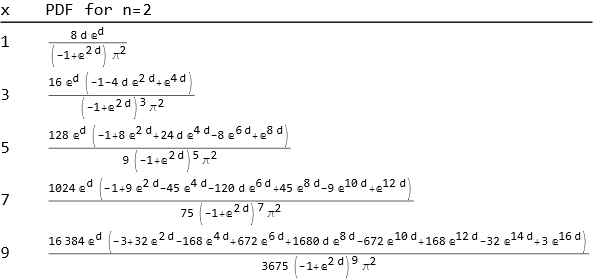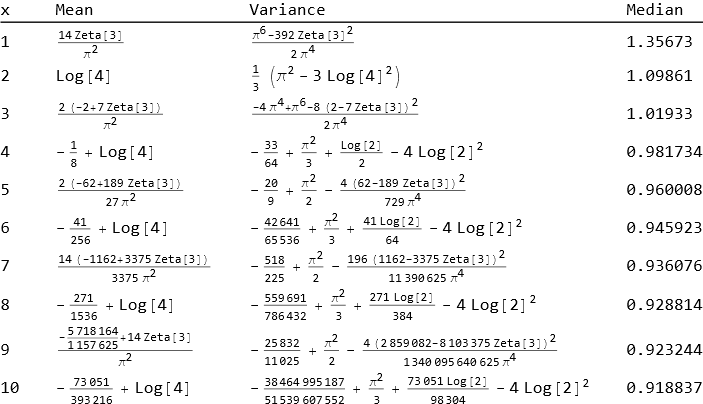Based on your goal "The goal is to find (approximate) analytical representation of X(n:n)−X(k:n), so one can assess its dependency on x (degrees of freedom parameter)" and that you are using Mathematica, an approximation to the distribution can be accomplished directly by numerical methods.
Here is the Mathematica code to find the distribution of the range for specified sample sizes and values of the degrees of freedom parameter $x$.
(* PDF of the range of n random samples from a common Fisher Z distribution with parameters 1 and x *)
pdf[d_?NumericQ, n_?IntegerQ, x_?NumericQ] :=
NIntegrate[PDF[OrderDistribution[{FisherZDistribution[1, x], n}, {1, n}], {x1, x1 + d}],
{x1, -\[Infinity], \[Infinity]}]
(* Plot pdf of range *)
Plot[pdf[d, 30, 3.75], {d, 0, 10}, PlotRange -> {Automatic, {0, Automatic}}, Frame -> True,
FrameLabel -> {"d", "Probability density"}, PlotRange -> All]

(* Mean and variance of range *)
mean = NIntegrate[d pdf[d, 30, 3.75], {d, 0, \[Infinity]}]
(* 5.06407 *)
variance = NIntegrate[(d - mean)^2 pdf[d, 30, 3.75], {d, 0, \[Infinity]}]
(* 1.7515 *)
As a partial check here are simulation results with the same parameters as the above example:
(* Generate 1,000,000 samples of size 30 from a Fisher Z distribution *)
data = RandomVariate[FisherZDistribution[1, 3.75], {1000000, 30}];
(* Calculate ranges *)
range = Differences[MinMax[#]] & /@ data;
Mean[range]
(* 5.06338 *)
Variance[range]
(* 1.75235 *)
One can investigate the relationships of various summary statistics and the degrees of freedom parameters using the above functions. (Although using simulations to do the same thing isn't much slower.)
Exact distributions
For (very) small values of $n$ (such as $n=2$), exact formulas for the pdf's, means, and variances can be obtained.
(* Fisher's z distribution functions *)
Fdz = 2 Exp[d + z] Hypergeometric2F1[1/2, (x + 1)/2,
3/2, -Exp[d + z]^2/x]/(Sqrt[x] Beta[x/2, 1/2]);
Fz = 2 Exp[z] Hypergeometric2F1[1/2, (x + 1)/2,
3/2, -Exp[z]^2/x]/(Sqrt[x] Beta[x/2, 1/2]);
(* Associated density functions *)
fz = D[Fz, z];
fdz = fz /. z -> d + z;
(* Integrand for n=2 *)
integrand = 2 fz fdz // FullSimplify;
(* Find a table of pdf's for x = 1,2,...,10 *)
pdf = FullSimplify[
Table[{x, Integrate[integrand, {z, -\[Infinity], \[Infinity]}, Assumptions -> d > 0]},
{x, 1, 10}], Assumptions -> z > 0 && d > 0]// TrigToExp // Together;
TableForm[pdf[[{1, 3, 5, 7, 9}]], TableHeadings -> {None, {"x", "PDF for n=2"}}]

TableForm[pdf[[{2, 4, 6, 8, 10}]], TableHeadings -> {None, {"x", "PDF for n=2"}}]

Means, variances, and medians can be obtained (although only numerically for medians):
means = Table[{x, Integrate[d pdf[[x, 2]], {d, 0, \[Infinity]}]}, {x, Length[pdf]}];
variances = Table[{x, Integrate[(d - means[[x, 2]])^2 pdf[[x, 2]], {d, 0, \[Infinity]}]},
{x, Length[pdf]}];
medians = Table[
{x, d /. FindRoot[CDF[ProbabilityDistribution[pdf[[x, 2]], {d, 0, \[Infinity]}], d] == 1/2,
{d, means[[x, 2]]}]}, {x, Length[means]}] // Chop;
TableForm[Transpose[{Range[10], means[[All, 2]], variances[[All, 2]], medians[[All, 2]]}],
TableHeadings -> {None, {"x", "Mean", "Variance", "Median"}}]





